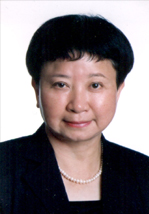
On 20 January 2020, the Court of Appeal in SkyWorld Development Sdn Bhd & Anor v Skyworld Holdings Bhd & 5 Ors (Civil Appeal No.: W-02(IPCv)(W)-383-02/2019) unanimously ruled, among others, that an action for infringement can be founded upon the unauthorised use of a registered mark as part of a trade or company name.
Background
The Appellants, SkyWorld Development Sdn Bhd and its related company, are renowned property developers in Malaysia. The 1st Appellant is the registered proprietor of three stylised trademarks consisting of the word “SkyWorld” together with accompanying tag-lines (“SkyWorld Marks”) as shown below. The word “SkyWorld” also forms part of the Appellants’ company name and the name of their property development projects.
Sometime in 2017, the Appellants discovered that the Respondents had used the words “Sky World” or “Skyworld” as part of their company names, domain name and the name of their proposed theme park project in Karambunai, Sabah. After failed attempts to resolve the issue, a civil action was brought against the Respondents for trademark infringement, passing off and unlawful interference with trade.
At the High Court, the Appellants’ claims were dismissed on, among others, the grounds that (i) the Appellants do not have monopoly over the word “SkyWorld” as the SkyWorld Marks are not registered as word marks; (ii) the competing marks are visually different as the Respondents’ use of the word “skyworld” was either wholly in uppercase or lowercase but not in mixed uppercase as in the SkyWorld Marks; and (iii) the parties are not engaged in the same trade.
The crux of the appeal rests on the issue of whether an action for infringement could be instituted for the use of a registered mark as part of a trade or company name. While there have been previous cases in Malaysia of similar nature, such actions were premised on the tort of passing off rather than trademark infringement.
Court of Appeal’s decision
At the outset, the Court found it useful to distinguish the functions of a trademark, trade name and domain name as follows:
- a trademark serves as the source identifier of a product or service in the marketplace;
- a trade name is used to identify the business offering the said product or service; and
- a domain name is the online identity of the business and is usually the same or similar to the trademark as part of the branding strategy.
Given the dearth of Malaysian cases on the issue, the Court turned to precedents from other common law jurisdictions and the European Court of Justice as reference in deciding that an action for infringement could indeed be founded upon the unauthorised use of a registered mark as part of a trade or company name. The Court was also persuaded by the recent amendment to Section 10(4) of the UK Trade Marks Act 1994 which expanded the scope of use of a sign to include use as a trade or company name.

The Court ventured further in clarifying the applicable tests in an infringement action. First, there should not be a microscopic comparison of the minute differences between the competing marks in deciding the likelihood of confusion. Thus, whether the infringing mark was used in uppercase or lowercase was immaterial.
Second, the trial judge had erred by enquiring whether the parties are in the same business. Instead, according to the Court of Appeal, the correct approach in deciding whether there is trademark infringement is to first enquire whether the Respondents’ use of the infringing marks came within the specification of services covered by the registration of the SkyWorld Marks. In this respect the Court opined that the words in a specification of services should be given their natural and ordinary meanings. Thus, the registered services of the SkyWorld Marks, namely “real estate development”, “property development”, and “building and construction of real property” would encompass the Respondents’ proposed theme park development. A clear case of infringement has thus been established.
Comments
We believe this is the first appellate decision which lays down the proposition that a registered mark could be infringed through the use of a registered mark or an essential part of it as a trade or corporate name. The grounds of judgment contain clear exposition on the tests to be applied when dealing with the issue of trademark infringement, passing off and unlawful interference with trade. It is novel and noteworthy that among the relief granted by the Court is an order directing the Respondents, including the directors, to publish apology notices in three national dailies to express their regret over the infringing acts.
In light of this decision, it is advisable for prospective business owners to conduct proper due diligence before deciding on their business name. Simple and cost-effective measures such as conducting a name search at the business or company registry, a domain name search or at the very least a search on Google may avert any unnecessary legal proceedings that may result in the cancellation of the business name, the publication of apology notices to the public, the changing of marketing materials and the loss of any goodwill built under the infringing name.
Mr Wong Chee Wai, Mr Eugene Ee and I acted as counsel for SkyWorld at the High Court and the Court of Appeal.
Write-up contributed by Teo Bong Kwang and Eugene Ee
14 February 2020






























